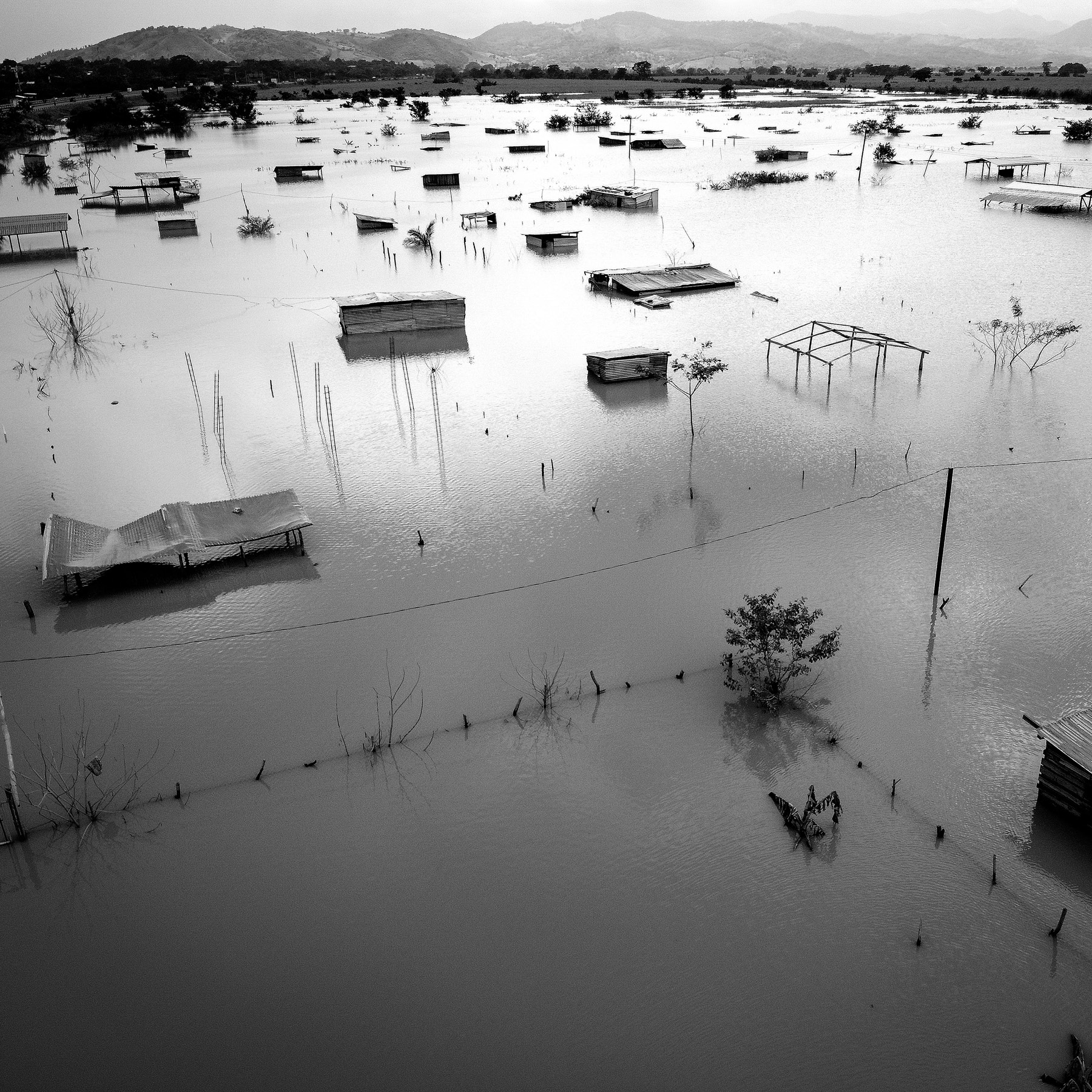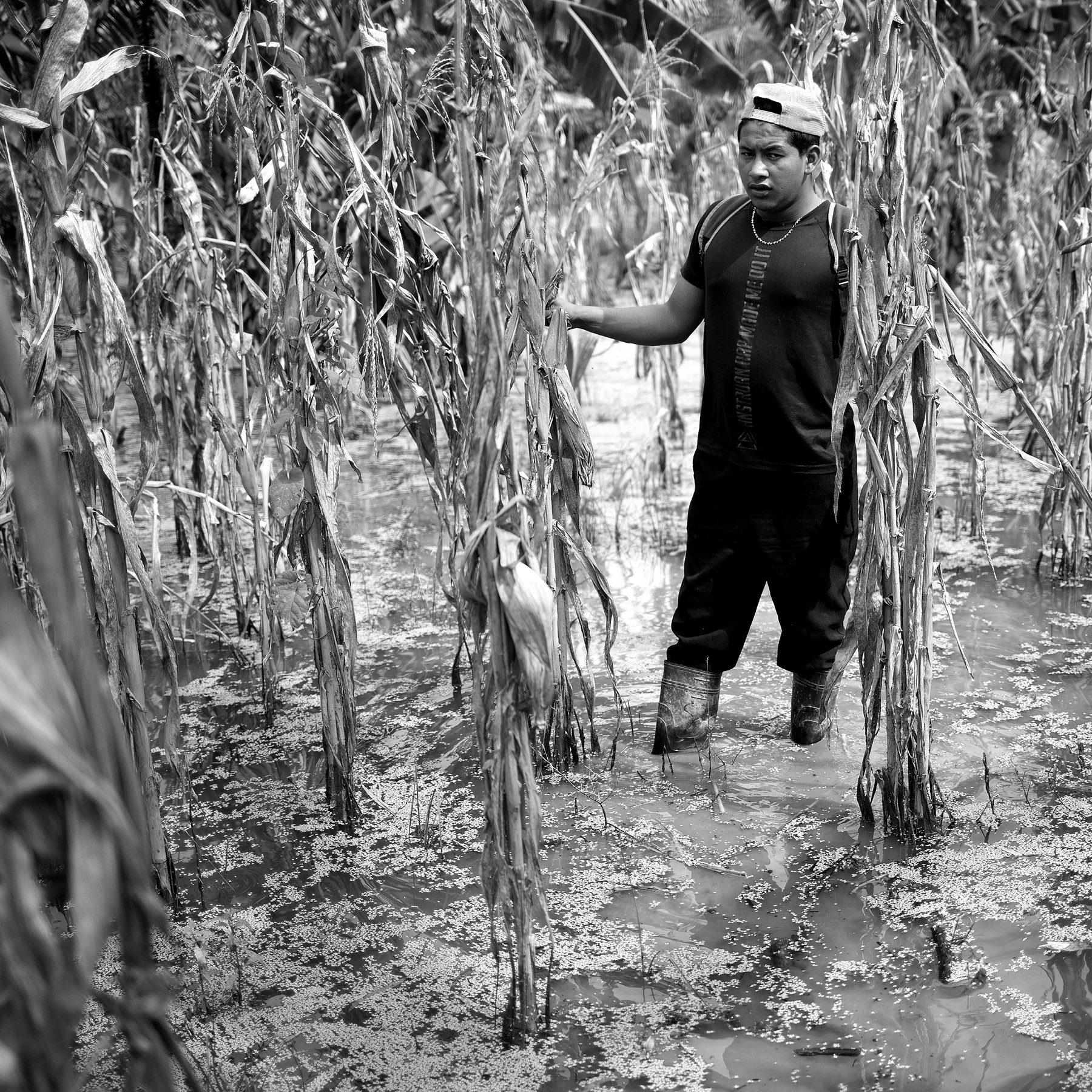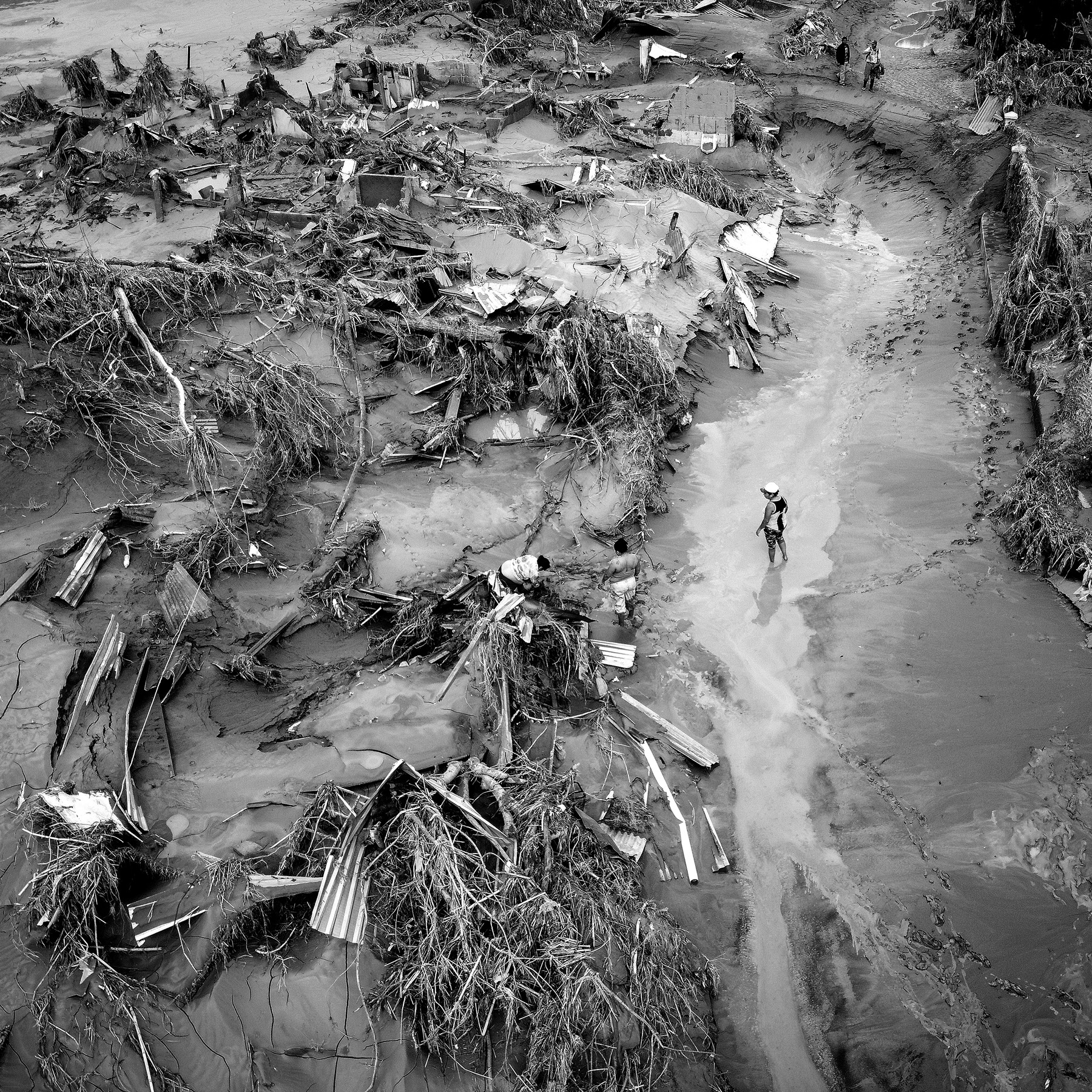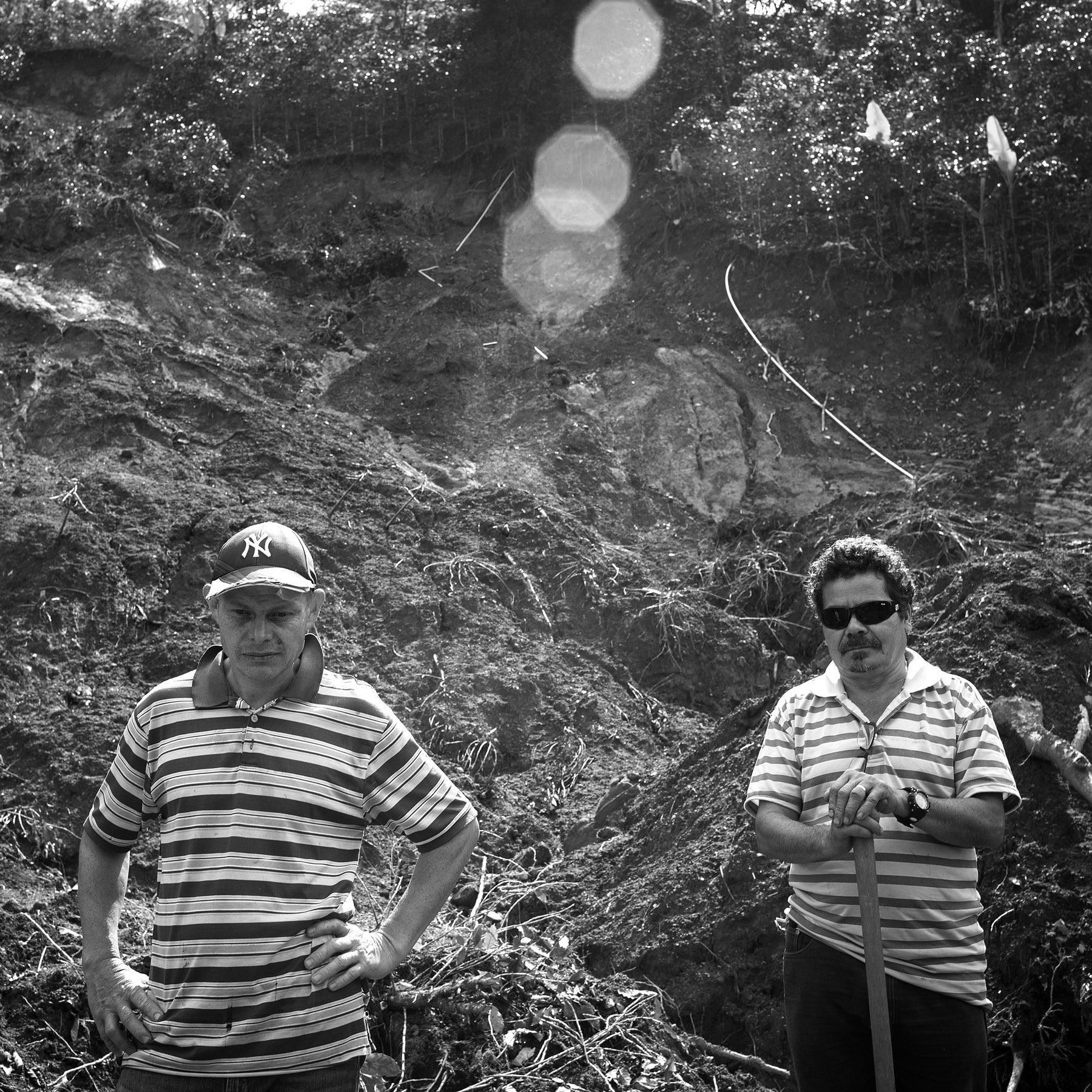Language
You can read the magazine in one of the following languages
Geolocation
You can read the global content or the content from your region

With the holidays fast approaching, for many it’s a time of year that is synonymous with one of life’s sweetest gifts: chocolate. It’s how we have come to express our sentiments and treat ourselves to a much-needed moment of joy.
However, the sky-high demand and well-stocked supermarket aisles hide the deeper issues that underpin the state of cocoa production today. There are increasing concerns about whether cocoa farmers, who are on the frontline of the climate crisis, can continue to meet this high demand while simultaneously maintaining their livelihoods.
In the West African cocoa belt, which supplies 70 percent of the world’s cocoa, an estimated two million smallholder farmers depend on this delicate, labor-intensive crop as their sole source of income.
Here, rising temperatures, which in turn affect humidity and rainfall, are reducing the ability for cocoa to thrive. Climate change is also responsible for pests and diseases that in certain cases have reduced crop yields by up to 50 percent.

“We recently conducted a study of coffee farmers in Kenya that shows that more than 90 percent of farmers are experiencing the effects of climate change on their farm.”
– Michael Gidney
Climate forecasters have predicted that almost a third of global cocoa production may no longer exist by 2050 due to rising temperatures.
But, according to the Fairtrade Foundation’s Endangered Aisle 2023 report, it’s not just cocoa that’s being negatively impacted by climate change. Tea, banana and coffee farmers in developing countries have reported similar problems that the report says could deem these household staples unsustainable in just a few decades.
Climate and agriculture experts, for instance, have hinted that land suitable for growing coffee could be halved by 2050.
“As part of Fairtrade’s FairVoice project, we recently conducted a study of coffee farmers in Kenya that shows that more than 90 percent of farmers are experiencing the effects of climate change on their farm,” Fairtrade Foundation CEO Michael Gidney explains.
To complicate matters further, satellite imagery analyzed by researchers has confirmed the large-scale destruction of protected forests in West Africa, largely concentrated in Ghana and Ivory Coast (Côte d’Ivoire). These areas are now, you guessed it, cocoa plantations. Sadly, these crops have become a contributor to – and a victim of – the unforgiving forces of climate change.
To get a better understanding of the current situation, The CEO Magazine spoke to the ‘Doc of Choc’, Founder and CEO of African Cocoa Marketplace, Kristy Leissle.
Leissle points out that unpredictable rainfall patterns are causing stress for cocoa trees, which she says impacts yields, as well as leaving the plants vulnerable to diseases and pests.
“In the cocoa sector, predictions for this upcoming season are again for a supply deficit, larger than the previous two combined,” she says. “While a high price seems like good news for farmers – and of course it can be – it’s because supply is threatened, which means ultimately farmers have less cocoa to sell.
“The impact of climate change is real and is happening now.”
While Leissle doesn’t predict a mass exodus from cocoa farming anytime soon, she highlights how climate change has only exacerbated the issue of poverty and inequality for smallholder cocoa farmers. Her insights are based on almost two decades of fieldwork.
“If farmers don’t see hope for the future in cocoa, they will do what they need to do to keep food on the table and a roof over their heads,” she explains. “We need exponential growth in the price paid to farmers, not incremental.”

“While a high price seems like good news for farmers – and of course it can be – it’s because supply is threatened, which means ultimately farmers have less cocoa to sell.”
– Kristy Leissle
An appropriate financial adjustment is also a key driver towards futureproofing an industry that needs to be attractive to younger generations.
So, all we need to do is increase the amount we pay for chocolate and then the problem will be sorted, right?
Unfortunately, a higher price that the consumer pays doesn’t necessarily equate to a better life for those at the losing end of the supply chain.
“More often than not, high chocolate bar prices reflect the complexity of the chocolate supply chain and manufacturing process, as well as packaging, marketing and retail costs,” Leissle says.
A crisis almost always calls for experimentation and adaptation strategies, and this is precisely the approach needed to tackle the cocoa crisis.
“Unless businesses pay fair prices now to support producers adapting to the climate crisis, our favorite foods will become more endangered in future,” Gidney says. “There’s a risk that these products could become a luxury rather than an everyday treat, if things continue as they are and the climate crisis worsens.
“The system is close to breaking point. The future of farmers’ livelihoods and our food is at stake.”

“Unless businesses pay fair prices now to support producers adapting to the climate crisis, our favorite foods will become more endangered in future.”
– Michael Gidney
For many of these farmers, local opportunities and resources are not exactly plentiful, which means that adaptation strategies require external intervention. As Leissle adds, these are individuals who have stuck to their trade for eons despite how precarious it is.
“It’s not that simple to simply diversify, or change what you do to earn an income,” Gidney points out. “Firstly, there are very few other employment opportunities in rural areas, where most of the world’s coffee and cocoa are grown.
“Some Fairtrade cooperatives use the Fairtrade Premium that they receive to invest in finding new ways to earn an income, which is increasingly a key component of climate programs.”
If consumers really want to make a difference, Gidney advises them to invest in Fairtrade products.
“Fairtrade partners with farmers and businesses alike to tackle the crises farmers face,” he says. “We do this in many ways, including by campaigning for fairer incomes and by training coffee and cocoa farmers to fight the climate emergency and adopt greener, more sustainable farming methods.”
United States-based chocolate behemoth Mars has responded to the crisis by partnering with Fairtrade and Ivory Coast-based union of cocoa and coffee cooperatives ECOOKIM to achieve a ‘living income’ for cocoa growing communities, while Swiss chocolatier Lindt & Sprüngli’s Farming Program claims to be supporting cocoa farmers through ‘income diversification’.
On the other end of the spectrum is a growing movement of pioneers who are steering humanity into the future of bean alternatives.
Entrepreneur Ahrum Pak swapped her career in investment banking to co-found a food tech company with fermentation expert Johnny Drain. Out of their shared passion for fermentation and futureproofing their favorite foods was borne an entirely new product – cocoa-free chocolate.
“The alt-choc category is new and small, but it’s growing quickly,” Pak says. “What’s interesting is the startups in our space all use different tech approaches. Thanks to the power of fermentation, we can transform humble plants like cereals and legumes into chocolatey goodness.”

“Rising temperatures, reduced and erratic rainfall and increasing susceptibility to pests and diseases are just a few factors that are imperiling cocoa crops.”
– Ahrum Pak
Since launching WNWN Food Labs in 2021, the startup’s suppliers include bakeries, confectionery groups and fast-moving consumer goods companies, and very soon consumers can get their first taste of future confectionery.
For Pak, cocoa is deeply problematic on multiple fronts. Pak is convinced that incoming European Union (EU) legislation is likely going to raise some serious supply chain questions. The new law ensures that companies selling products in the EU are not in any way linked to deforestation, including cocoa and coffee.
“We simply cannot continue to produce the way that we do, due to climate change’s impact. Rising temperatures, reduced and erratic rainfall and increasing susceptibility to pests and diseases are just a few factors that are imperiling cocoa crops,” Pak says.
With so much at stake, will consumers continue to be able to enjoy the mood-enhancing effects of chocolate or the rush of energy from their morning brew?
“It is my belief that ‘hand-grown’ cocoa and coffee will and should become luxuries,” candy historian, author and Attribute Analytics Business Owner Beth Kimmerle says. “They are resource-intensive crops that rely heavily on humans and Mother Nature.”
She believes that entrepreneurs killing two birds with one stone – food waste and sustainable bean alternatives – are in a favorable position.
“The more interesting and scalable solutions in the coffee space now are the companies converting upcycled waste or undervalued food products such as fruit rinds and pits into alternatives,” she says. “I recently tasted a freshly brewed Atomo bean-less coffee with the Founders, and I was blown away.”

“Farming communities in low-income countries are being disproportionately affected by the climate crisis, despite having done the least to cause it.”
– Michael Gidney
There is also hope, says Kimmerle, that science could offer a viable solution with cocoa varieties that are drought and disease resistant – ‘ninja beans’, so to speak.
“Researchers are working on hearty coffee types and cocoa varieties that offer yield, resistance to diseases and can thrive in warmer and dryer climates – thereby requiring less water,” she says.
While the forces of climate change are now inevitable, how we respond is not. This same force can cause some to ride the wave of change, while others lose their livelihood if left unassisted.
Gidney’s final comment offers some food for thought, noting that the real impact will be felt at the source.
“Farming communities in low-income countries are being disproportionately affected by the climate crisis, despite having done the least to cause it,” he says.